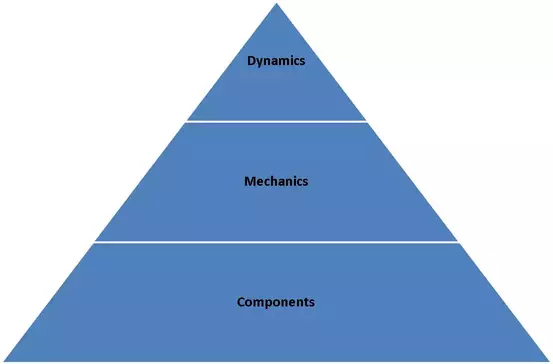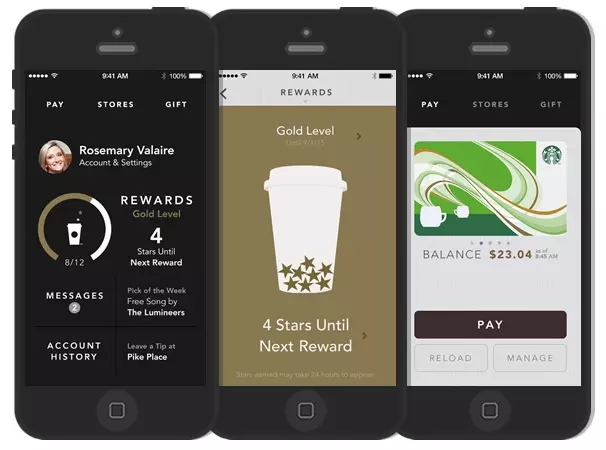There is gamification almost everywhere in our daily life. We are not even aware of some of these gamifications. These are successful gamifications. If you are interested in gamification and want to produce content with gamification, this content may be of interest to you. In this guide, we will talk about what gamification is, its history, elements of gamification and its uses and successful examples in different industries. Here you can see what the capabilities of gamified interactive videos are.
What is gamification?
It is the game mechanics and logic used to increase the motivation of individuals or users and to ensure their success in a certain subject by adding them to the existing processes of a non-game area. It is the use of many of the elements of the game in a different field outside the game. It enables people or users to interact and increase their motivation towards a certain goal. In this way, the expected behavior change in users is expected to be sustainable and long-term. Interacting is an important point here. In a place where there is no interaction, there is no gamification. Gamification can be used in digital and non-digital environments.
History of gamification
Johan Huizinga (1938) described the play as one of the common characteristics of people in his book "Homo Ludens". He also says that the game is as old as human history.

The term gamification was first used by Nick Pelling in 2002. Nick Pelling is a game designer. There are some opinions that the idea of gamification is not new. However, it was 2010 when gamification started to be heard a lot and became popular. With the development of technology and the popularization of gamification, it has been used in many sectors. One of the reasons why gamification is being used so widely is to provide the intrinsic and extrinsic motivation of the individual. With the development of technology, stimuli and contents have increased, nowadays, attention can be easily distracted and motivation decreases. Gamification can offer an individualized gamified follow-up and development plans with developing technology. Gamification is almost integrated in many areas of life, increasing the motivation of the individual, encouraging and supporting their development. Here, one of the most basic points that provide motivation is to make the things that the individual does / should do fun. Nowadays, almost everything we do and want to do is gamification. It is ensured that the work that is difficult to do or lazy is sustainable by making it fun. As an example, we can show daily exercise. Exercise applications that we can easily use on mobile devices provide them to us.
These are not the only goals of gamification. At the same time, it aims to develop feelings such as ownership, empowerment, success, social impact, avoidance.
Elements of gamification
There are elements that make the functions of the game process work in gamification. At the same time, there are elements that allow the player to interact with the game thanks to the mechanics in the game. In Werbach's Pyramid, these gamification elements are distributed as follows.

Dynamics
- Limitations
- Emotions
- Fiction
- Progress
- Relationships
Mechanics
- Difficulty
- Chance
- Cooperation
- Competition
- Feedback
- Awards
- Shopping
- Status
- Desk
- Resource Acquisition
Components
- Success
- Avatar
- Badges
- Leaderboard
- Levels
- Points
- Teams
- Virtual Gifts
- Accessing Content
- Collections
- Adventure
- War
- Gift
- Struggle
- Social Graphics
If you intend to use gamification in your content, you can research these elements and their uses in detail.
Industrial transformation on gamification
Gamification has started to be used frequently in industrial areas such as health, sports, finance and marketing. The most important technology that provides this is the development and facilitation of many areas of life. Looking at the history of gamification, its industrial development can be easily understood. Advanced technology and newly popularized gamification were an opportunity for industries. Companies that use this opportunity very well continue to be remembered with their innovative and pioneering aspects in this field. This situation is not specific to gamification. Think about the innovations that come up with technology. Among them, there are some sound and unusual innovations. The companies or industries that first integrate these innovations into their systems will continue to be remembered if they have achieved success in this regard. They also become pioneers. Correct timing is extremely important in this regard.
Another important point is that imagination can now be realized with gamification. Gamification designs and technology turn the imagination into reality. The reason is very simple. There is now access to technical competencies and gamification know-how.
Points to consider before designing gamification in industries
Gamification is undoubtedly an important and effective element for industries. However, gamification in the industrial sector may encounter some difficulties. We would like to share some previously experienced challenges with you. Thus, it will be easier for you to consider these points before constructing gamification.
- It may be desirable to use gamification within an industry. If you want to use gamification for a long-established and large company, the gamification you will probably build will also have a large structure. In such a case, you need to think in detail about the structures and elements you want to include in gamification before creating the gamification design. This is because when you design gamification gamification with a big structure and you realize that there are some missing cornerstones, things can get a little messy.
- You should be careful when using the gamification components, which are monetization and gifts. If you do not use these gamification components carefully and in a balanced way, you may cause too much competition among your users and colleagues. This competition will be sweet at first, but things may change in the future.
- If you intend to add gamification to all business processes, be sure you want to do so. Because for this, a great study needs to be planned and implemented. Instead, do your first gamification design part of the business process first. Thus, you will have information about the process of gamification design.
- You should be careful when using the scoring system. Because your employees may start trying too hard for points after a while and therefore their intrinsic motivation may decrease. Therefore, although extrinsic motivations are necessary for gamification, they should be used in a balanced way. At the same time, it is not mandatory to use all gamification elements in a gamification material. While setting up gamification, you should consider what the needs are and focus on why designing gamification material is desired.
Engagement & learning, focus benefits on gamification
Sometimes it is not easy to acquire the desired behavior. Sometimes, even if a behavior is acquired, it may not become a regular habit. This is a situation that almost everyone experiences in different subjects. Especially today, with the development of technology, we are exposed to a lot of stimulants. Exposure to too much stimulation can cause a loss of motivation. Losing motivation can make things even more difficult when it is currently difficult to win and maintain certain behaviors. The fact that we are faced with too much content has led us to be more selective about the contents. This situation became valid for every field. That's why content producers try to be very careful about this. Producing engaging content has become a trend. Content should be engaging, entertaining, and motivating.
Let's go back to the topic of gaining behavior. Sometimes we need support (friend, mobile apps, inspirational videos and books, challenge) to gain a certain behavior. In today's conditions, the need for support has increased enormously. Gamification comes into play here.
Gamification can make people gain a habit in a fun and motivating way. It is a good supporter in this regard. That's why gamification is used in every field nowadays. By attracting the attention of users/people, it makes the behavior that needs to be gained or the subjects to be learned fun. Being interesting allows users to focus on relevant content. Since the content is fun, it is no longer a difficult task to overcome. So the logic is pretty simple.
Use case
Marketing
You can make your customers' shopping experiences more enjoyable. You can design gamification for each of the platforms you reach your customers. Whether your customers are at your store or shopping online, it doesn't matter. The first thing to do is determine why you want to use gamification. You can do it for fun advertising, or to increase your customers' purchases. We can give Starbucks' mobile application as an example. Customers who buy a number of coffee determined by Starbucks have the right to a gift of coffee and can use this coffee right whenever they want. Likewise, it encourages the use of the app. New users are entitled to a gift of coffee if they download the app and register. Within this gamification design, the customer can win awards, stars. Thanks to all these, it encourages customers and enables them to be permanent customers.

You can attract the attention of your customers and potential customers who come to the store, the fair with interactive videos. You can present a short entertainment by interacting with the interactive video. In these videos, you can ask questions about your brand or industry. To win the hearts of successful people, you can give them a small gift. You can be sure that there will be hours of fun for both you and your customers. You can also win the hearts of your potential customers.
You can see a successful example of Cinema8 on this subject below.

Education
LMS should be the first to come to mind when it comes to gamification in education. Although not valid for all LMS, some LMS allow gamification design editing. If you are training your users
